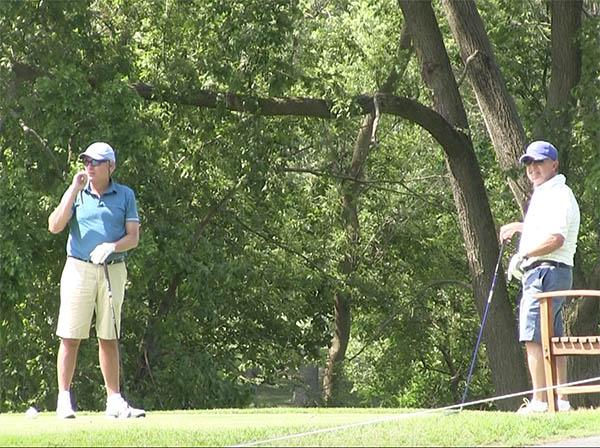The list of the winners of the Open Championship at Carnoustie Golf Links reads like a who's who of golf. When the winner of next year's tournament hoists the claret jug, he'll join the likes of Tommy Armour, Ben Hogan, Gary Player, Tom Watson, Paul Lawrie and Padraig Harrington, all of whom were crowned Champion Golfer of the Year after winning at Carnoustie.
 The old school course that has been herding through thousands of players a year since 1850 is going high tech to keep pace of play moving.
The old school course that has been herding through thousands of players a year since 1850 is going high tech to keep pace of play moving.
Tagmarshal is a geo-tagging system that communicates each group's position on the course and allows operators to monitor and manage pace of play and enhance the golfer experience.
Time is one of several barriers that people cite as preventing them from playing more golf or playing at all. How serious of a problem is pace of play?
According to Golfweek, the average time to play 18 holes at a U.S. course is four hours.
More than 60 percent of respondents in a recent survey of more than 50,000 golfers in 100-plus countries indicated that it takes too long to play a round of golf, and 53 percent said time away from work and/or family prevents them from playing golf more often.
In an era where more courses close than open, Tagmarshal provides an opportunity to keep play moving and improve the golfer experience.
"The Tagmarshal system is only being trialed at the moment as our head PGA professional wants to see if it is a system that can add value to our operations," said Sandy Reid, superintendent at Carnoustie.
The system shows operators, either on computer, tablet or phone each group's position on the course, and assigns a color to each group in relation to time goals. Green is good, orange is slow, but delayed by the group ahead, and red signifies a group that is behind and needs attention. The system also shows the position of rangers on the course and tracks their whereabouts throughout the day to ensure they are spending their time where needed to keep play moving.
The system alerts operators when groups are falling behind and where they are on the golf course in real time. It also provides data on rounds time per month, average round times per day and average time per hole as well as a map of all activity on the golf course.
A course in Michigan said it has improved pace of play by 15 minutes in just two months. At Erin Hills, site of this year's U.S. Open, head pro Jim Lombardo says the system has helped reduce pace of play by 10 minutes.
Pushing groups through 10-15 minutes faster than before could translate into extra rounds and revenue and priceless positive PR.
"Pace of play is obviously one thing we are looking for it to help with but not necessarily because it is a big issue," Carnoustie's Reid said. "We currently have course rangers to assist with slow play but their effectiveness is perhaps not as good as one would hope.
"The thought would be that if we purchased the Tagmarshal System then we could cease with our course rangers and instead have one of our concierge team go out on course to chase on a slow group if a they hadn't reacted to warnings from the system."
Developed and headquartered in South Africa, the Tagmarshal system is being used at some of the world's top facilities, Erin Hills, Kiawah Island, East Lake, Valhalla and Ballybunion in Ireland.
Geo-fencing, set-up and training takes about three weeks.
About the size of a matchbox, tags are rechargeable, and only one player or caddie per group need carry a tracking tag, which can be attached discreetly to a golf bag. Individual golf cars also can be tagged for monitoring.

